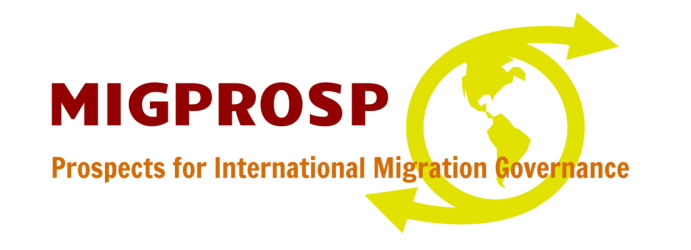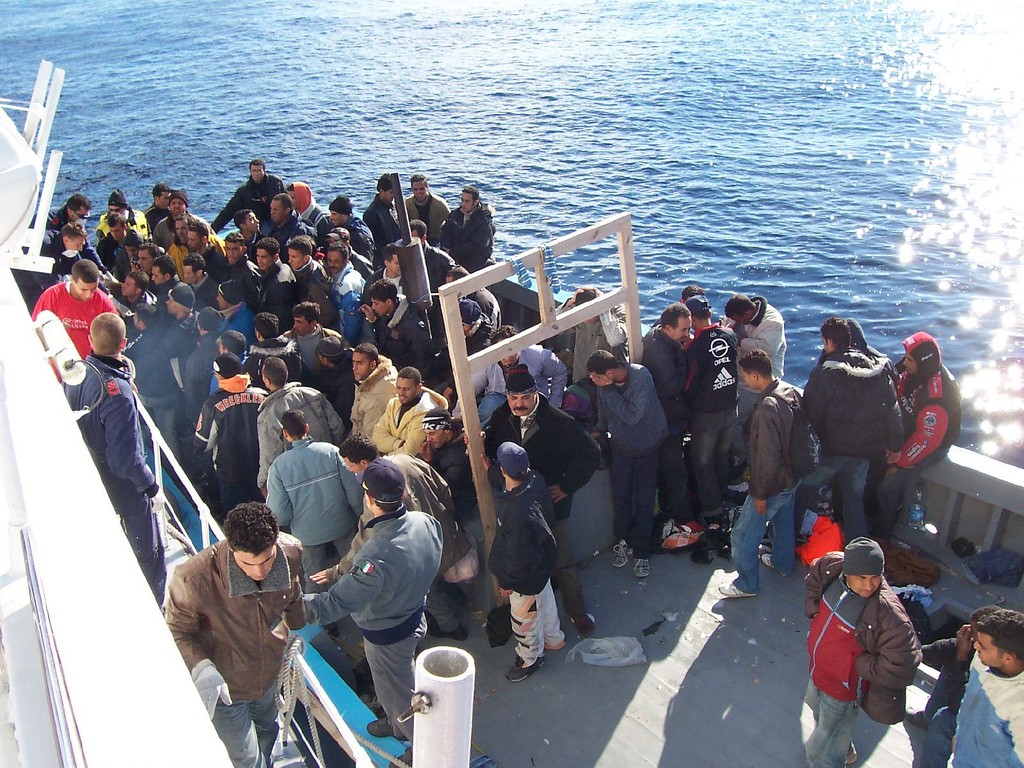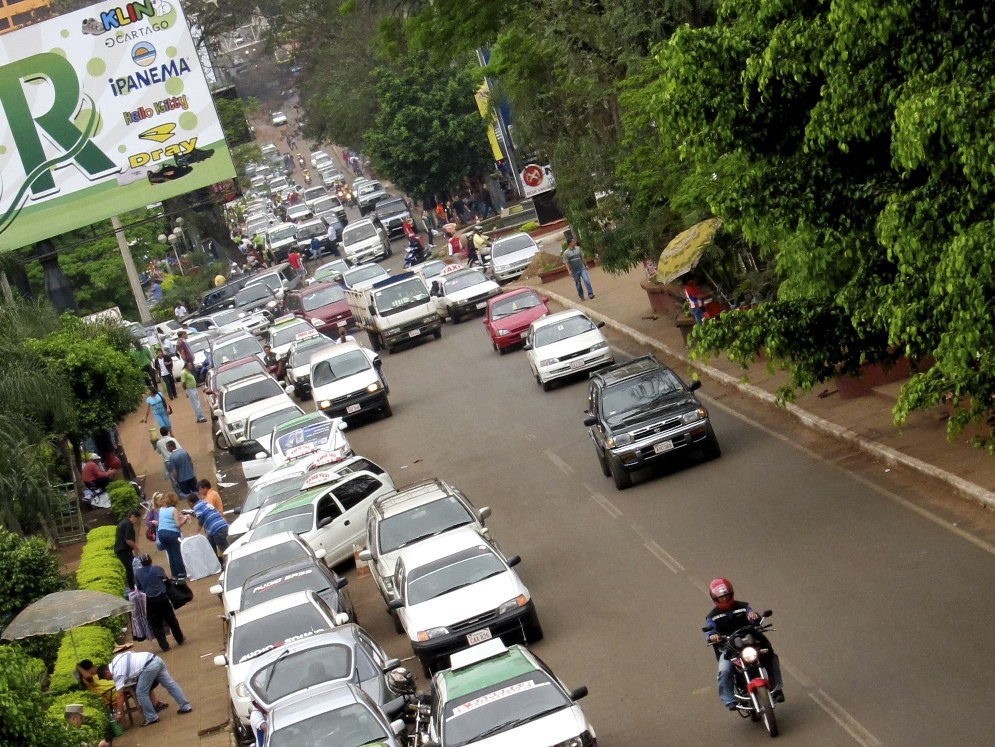Borders, migration, and global governance in West Africa: a research agenda – by Philippe M. Frowd
When arriving in Senegal’s main airport in Dakar, travellers have their fingerprints taken digitally and stored in an entry and exit tracking system. At the same time, the country’s navy carries out joint sea patrols to detect irregular migrants alongside Spanish police. Further north, Mauritania is building new border posts as part of a border management strategy funded in part by the European Union.
Across West Africa, border control is increasingly technological and transnational, and brings in a broad range of actors and approaches. The diversity of practices taking place under the banner of ‘border control’, and the strategies of intervention used to improve capacity to govern borders, tell us a lot about the nature of control over migration, the priorities of African security actors, and the diffusion of security practices to the global south.
Lines in the sand?
Border control in West Africa is increasingly transnational. We know that the drawing of borders across Africa has been profoundly shaped by the colonial encounter, but we often lack an appreciation for the diversity of actors who make these borders function every day. Who precisely is involved, and how do these different actors relate to each other?
In my fieldwork in Senegal and Mauritania, I found that there was a veritable patchwork of actors with varying degrees of global or local connection: European Union (EU) delegations, local police and gendarmeries, navies and air forces, the International Organization for Migration (IOM), the World Bank, and even the police forces of EU member states. For instance, the construction of a border post in Mauritania can be built with money from the German ministry of foreign affairs, based on a plan approved by the French embassy, and coordinated by the IOM. Examples such as this show that borders are not just lines in the sand, but vibrant social institutions shaped by professional practice.
Why care if borders are ‘vibrant social institutions’? To begin with, mapping out who is involved in border control gives us a view into different perspectives and approaches to border control. In the absence of a single global standard of border security, approaches are taken from a potentially conflicting range of sources: the IOM’s training may draw from its Essentials of Migration Practice while a local border management strategy may adapt standards from the EU’s Training Manual on Integrated Border Management in External Cooperation. These testify to actors’ varying beliefs about how borders are to be controlled, but also show the diffusion of ‘Western’ knowledge about border control to different contexts.
Take the use of workshops and seminars organised in African states by agencies like the IOM: this training is justified as improving state capacity to respond to threats such as porous borders, but also operates to ensure consensus about the appropriate response to such questions. This is particularly telling in the case of Senegal’s joint patrols with Spain since 2006, whereby the latter has set the agenda on the need to ‘control’ irregular migration, aided by donations of training and equipment by the Guardia Civil. In cases like this we see not just the diffusion of knowledge, but also the continuing externalization of the EU’s external border.
“Increasing capacity”
Increasingly transnational and technical, West Africa’s borders are shaped by state-building rationales whereby interventions are justified in terms of improving ‘capacity’. On one side, state capacity to secure borders is the target of international interventions, such as programs by the German international development agency (GIZ) to ‘professionalise’ the Mauritanian police. These programs generally benefit from the cooperation of domestic security agencies, as external funding and training means a boost in human and technical resources.
The pursuit of better state capacity is also a justification for policies carried out by West African states themselves, and often results in the adoption of new border control technologies. In the case of Senegal’s biometric visa rollout, the state’s ability to screen, in real-time, who is applying to enter the country has been trumpeted as a modernization of security capacity. Security officials see biometric technologies such as these as keys to better ‘legibility’ of cross-border flows.
This emphasis on capacity-building on all sides acts as a ‘trump card’ that reduces political and professional opposition to what are sold as technical or developmental solutions. In short, the global governance of borders in West Africa features a vast array of approaches to controlling borders but operates on a common assumption that border security can be improved through state-building.
From diversity to trajectory
As I continue my research on borders and migration at the University of Sheffield, I look forward to carrying out a deeper examination of the mentalities and rationalities of people within international organizations involved in migration management in Africa. I am particularly drawn to this question because these forms of knowledge are often a crucial factor between abstract policies on one side, and actual implementation on the other.
While my previous research was focused on the diversity of actors and knowledges in the field of border control, my next project focuses more on the trajectories of these actors within particular institutions, and in particular the International Organization for Migration. This emphasis on trajectories emerges from a realization during my earlier research that the backgrounds and career pathways of actors in migration management might be playing a major role in how they understand their work and, in turn, how they implement their projects.
For instance, IOM staff management styles may differ greatly depending on whether their backgrounds are in computer science, social justice activism, or in law enforcement. I am particularly interested in the IOM as it has taken on a twin role as a provider of security tools (such as border posts in South Sudan) and of humanitarian solutions (such as repatriations), reinforcing a nexus of care and control familiar in the context of international cooperation in West African countries.
Investigating the social space of this organization — its bureaucratic politics, staff trajectories, and everyday practices — can tell us how the governance of migration happens in practice and how institutional priorities are shaped by internal struggles and understandings.
Read More: Revising the EU Blue Card Directive



